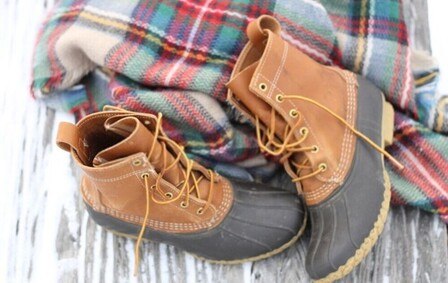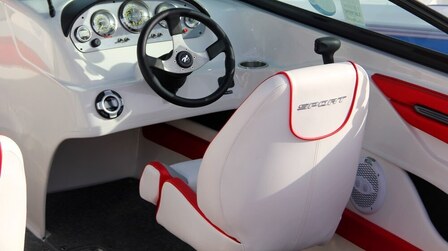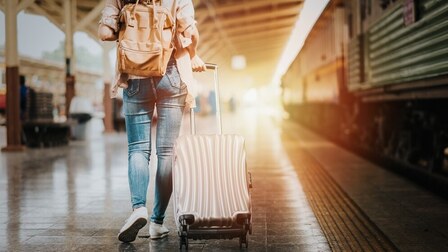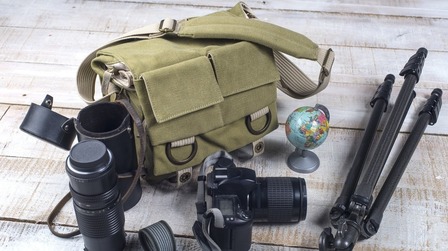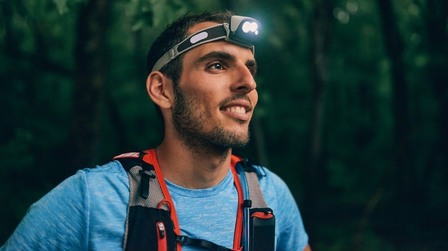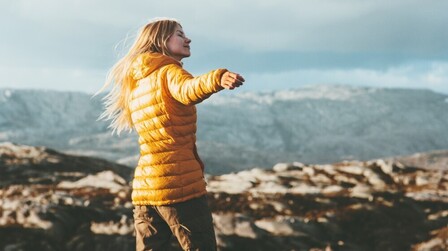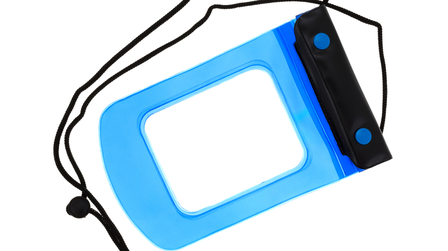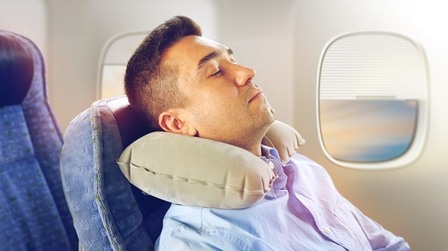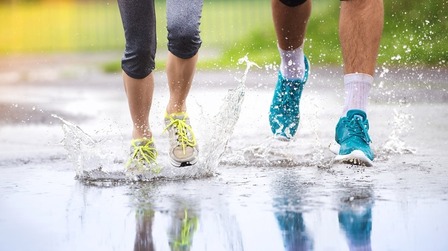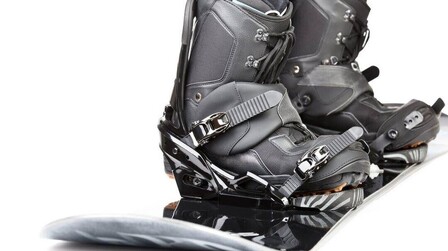Many people consider mirrorless cameras a perfect companion for travel because of their image quality, functionality, lightweight, and compactness. But still, there are countless mirrorless units on the market, how do you come to a decision on which one to buy?
Here are the best mirrorless cameras for travel (2026 Update):
- Best Overall: Sony Alpha a6000
- Best For Shooting Landscape: Canon EOS RP
- Best For Low Light Conditions: Panasonic Lumix G85
- Best For Beginners: Olympus OM-D E-M1 Mark II
- Ultra-Light: Fujifilm X-A7
- Best For Self-Portraits: Nikon Z50
| 6 Best Mirrorless Cameras For Travel | ||
|---|---|---|
Best Overall | Sony Alpha a6000 | |
Best For Shooting Landscape | Canon EOS RP | |
Best For Low Light Conditions | Panasonic Lumix G85 | |
Best For Beginners | Olympus OM-D E-M1 Mark II | |
Ultra-Light | Fujifilm X-A7 | |
Best For Self-Portraits | Nikon Z50 | |
Best Overall: Sony Alpha a6000

- Easy and intuitive controls - built-in OLED viewfinder
- Faster, higher-quality, and smaller - World's fastest auto focus6 at 0.06 seconds
- Deliver high-resolution images, even in low light - 2 lenses and 24MP APS-C sensor
- It goes through batteries quickly
If you’re looking for a mirrorless camera that can give you quality images without weighing too much, this fits the bill.
It offers great colors and sharp images while the scene modes provided on the camera are darn good. While focusing on the zoom was much faster than some counterparts at the same price point, the added OLED viewfinder makes this camera stand out from the competition.
A big compliment for its night shot mode with 3 exposure settings, resulting in correctly exposed composite pictures so when manipulating on Photoshop/Lightroom, it allows for the maximum possibilities.
| Sony Alpha a6000 Specifications | |
|---|---|
Weight | 0.76 lbs |
Dimension | 4.72 x 1.78 x 2.63 inches |
Effective Pixels | 24 megapixels |
Zoom Range | 3x |
Highlight Features | built-in OLED viewfinder World's fastest auto focus6 at 0.06 seconds 2 lenses and 24MP APS-C sensor |
The Sony Alpha a6000 is an all-around fantastic mirrorless camera that we surely recommend for any traveler.
Best For Shooting Landscape: Canon EOS RP

- Allow for controlling and seeing everything, including exposure – the EVF
- Easy to choose your favorite exposure, lock it, and move the focus point - the exposure lock, focus, and drag function
- Easy to pack or hold – lightweight, grippy, and compact
- The leatherette cover could be better
- The body is a little cheap feeling
- Expensive
For shooting landscapes in particular, there really has been nothing else that can beat the Canon EOS RP, all thanks to the EVF which allows you to control everything and see everything including exposure.
In this EVF, you can see whether the sky is blown out.
It also provides you with an exposure lock, focus, and drag for easily getting your favorite exposure, locking it, or moving the focus point, which is much like you’ve got a peephole LCD.
Regardless, it’s lightweight, compact, ergonomic, and doesn’t require an extra bottom plate unless you have gigantic hands.
| Canon EOS RP Specifications | |
|---|---|
Weight | 3.91 pounds |
Dimension | 3.02 x 3.02 x 3.5 inches |
Effective Pixels | 2160p |
Zoom Range | 0.5x |
Highlight Features | the EVF the exposure lock, focus, and drag function lightweight, grippy, and compact |
Due to the added EVF, drag, focus, and exposure lock, we believe the Canon EOS RP is a wonderful choice for landscape-shooting.
Best For Low Light Conditions: Panasonic Lumix G85

- Offer super-clear handheld shots and detailed video in low light conditions - in-body 5 axis dual image stabilization & 4K video function
- Easy to customize - Two custom settings within the dial
- Neat for selfies/vlogging - The LCD screen allowing for a full swivel
- A little fatigue if carrying it on hands throughout the day
- A slight crop to the 4k video recording
Out of many mirrorless cameras that are able to work in low light conditions, this option produces the clearest handheld shots, thanks to its in-body 5 axis dual image stabilization. It also includes 4K video functions for amazingly detailed low-light videos.
Besides, it’s easy to customize. Two custom settings within the dial along with lots of buttons to customize come in handy when you want to save your own shooting modes.
If you want a flattering look or for grading, it also features a Cine-D feature. The LCD screen that allows a full swivel is really neat for selfies/vlogging.
We’re strongly impressed by how robust it is regardless of the low price point.
| Panasonic Lumix G85 Specifications | |
|---|---|
Weight | 1.58 lbs. (715g) |
Effective Pixels | 16 megapixel |
Highlight Features | in-body 5 axis dual image stabilization & 4K video function Two custom settings within the dial The LCD screen allowing for a full swivel |
If excellent low light quality is your main consideration, we recommend that you should look at this mirrorless camera.
Best For Beginners: Olympus OM-D E-M1 Mark II

- Small and lightweight
- Easy to hold – the ergonomic body
- User-friendly - Feature faster autofocus with more accurate continuous autofocus, dual memory card slots, & easy to customize
- Not perform well in low light conditions
There’re lots of good reasons for making this option the best choice for beginners.
First up, it’s a lot smaller and lighter, both body and lenses, than many other counterparts, yet so much functionality. Secondly, we love the ergonomics of this camera with the grip power battery holder, which is easy to handle.
It also highlights faster autofocus with more accurate continuous autofocus for both video and stills than the E-M5 Mark I. Plus, it’s easy to customize. You don’t have to dive into the menu system to change it while shooting.
One highlight feature that sets this mirrorless camera apart is its dual memory card slots.
| Olympus OM-D E-M1 Mark II Specifications | |
|---|---|
Weight | 1.1 pounds |
Dimension | 2.7 x 5.3 x 3.6 inches |
Effective Pixels | 20.4 megapixel |
Highlight Features | the ergonomic body Feature faster autofocus with more accurate continuous autofocus, dual memory card slots, & easy to customize |
Designed with lots of user-friendly features, the Olympus OM-D E-M1 Mark II is an unrivaled choice for beginners.
Ultra-Light: Fujifilm X-A7

- Easy to customize - various shooting modes
- Available for movie shooting - Advanced video functions and performance
- User-friendly – ultra-wide 3.5” touchscreen LCD
- Offer advanced AF performance and premium image quality - New 24.2MP APS-C CMOS Image Sensor
- The slow autofocus
- The touchscreen could be more responsive
If you’re looking for a lighter and more compact mirror camera, this is a shining candidate weighing only 455 grams, including the kit lens.
Regardless, it is very functional, highlighting diverse shooting modes, advanced video functions and performance, and an ultra-wide touchscreen LCD. But the real star is its new 24.2MP APS-C CMOS image sensors, which is constructed with copper wiring for higher-end image quality.
Not to say that this upgraded function also offers better AF performance.
| Fujifilm X-A7 Specifications | |
|---|---|
Weight | 0.69 lbs. |
Dimension | 9.09 x 9.09 x 9.09 inches |
Effective Pixels | 24.2MP |
Zoom Range | 3x |
Highlight Features | various shooting modes Advanced video functions and performance ultra-wide 3.5” touchscreen LCD New 24.2MP APS-C CMOS Image Sensor |
Weighing only 455 grams, the Fujifilm X-A7 is our recommendation for travel light.
Best For Self-Portraits: Nikon Z50

- Easy to vlog or shoot self-portrait - “Selfie” flip-down touchscreen LCD with robust 4K UHD video features and 20.9 MP sensor
- Deliver stable lowlight performance and higher-quality images - an ultra-large 55mm lens mount
- Easy to connect it to your smartphones or laptop - Bluetooth and Wi-Fi connectivity
- Feature no in-body stabilization
The reason why Nikon Z50 is a solid favorite pick of vloggers, YouTubers, and self-portrait photographers is its additional “Selfie” flip-down touchscreen LCD with robust 4K UHD video features and 20.9 MP sensor.
It’s also the very first DX-format mirrorless camera that utilizes an ultra-large 55mm lens mount for more stable lowlight performance as well as higher-quality images.
For an enhanced experience, it is built to pair with F Mount NIKKOR Lenses.
After shooting or vlogging, you can easily transfer all the videos or images to your smartphones or laptops easily thanks to the integrated Bluetooth and Wi-Fi connectivity.
| Nikon Z50 Specifications | |
|---|---|
Weight | 1.79 pounds |
Dimension | 9.1 x 9.1 x 9.1 inches |
Effective Pixels | 20.9 MP |
Highlight Features | “Selfie” flip-down touchscreen LCD with robust 4K UHD video features and 20.9 MP sensor an ultra-large 55mm lens mount Bluetooth and Wi-Fi connectivity |
The Nikon Z50 is built with everything needed for the best mirrorless camera for self-portraits.
How To Choose The Best Mirrorless Camera For Travel?
Size & Weight
When you take a camera on your trips, the size and weight are important because your luggage is restricted by airlines.
Despite being more lightweight than DSLR cameras, mirrorless cameras can take up more space. Their bodies can weight from 9 to 25 oz, including a memory card and a battery. It’s also worth noting that a camera with more features is often heavier and more expensive.
Apart from the camera body, you need to think about the lenses you will bring along, which added considerable weight to your luggage.
Image Stabilization
In most cases, holding the camera with your hands is enough for a stable shot. However, the stabilization problem will come up when you shoot in low-light environments that require slower shutter speeds.
This means image stabilization will be affected, resulting in a lot of noise in your photos. Therefore, you should choose a camera with image stabilization technologies, which may come with the body, the lens, or both.
Megapixels
Megapixels are related to the resolution of your resulting photos. For example, a 12MP photo has 12 million pixels, probably 4000 pixels in length, and 3000 pixels in width.
Megapixels are also related to the size of an image, determining how large you can print a photo. You should go with a camera that offers a resolution higher than 12MP.
Sensor Size
This is a very important factor of a camera that receives the light and saves that information in the form of a digital image. It comes in various sizes and larger sizes are generally better because it receives more light.
For a mirrorless camera, you can choose from three main sizes: full-frame, APS-C, and micro four thirds, from the largest to smallest, respectively.
Which Brands Make The Best Mirrorless Camera For Travel?
Sony
Founded in 1946, Sony is one of the largest camera makers in the world. Each product focuses on creativity, technology, diversity, sincerity, and integrity.
Canon
Canon is another very renowned camera maker. Over the past 83 years, this brand has dedicated to innovating technology for their cameras. You will find some of the best cameras at Canon.
Panasonic
With over a century of experience in the industry, Panasonic has built a reputation of its own in the camera world. It offers high-quality cameras for global users.
Olympus
Established in 1919, this brand offers intelligent, sophisticated cameras that produce high-quality photos for you.
Fujifilm
Since its establishment in 1934, this Japanese brand has made the best use of its imaging and information technology to make highly functional and high-performance cameras.
Nikon
Over the past century, Nikon has set a unique footprint in the camera industry. its products are made to empower creativity and deliver trustworthiness.
FAQs
What camera should I buy for traveling?
There are countless models in the market, but we can recommend a few mirrorless cameras for travel from the most trusted brands:
- Sony A7 III
- Fujifilm X-T3
- Sony A6600
- Olympus e-M10 Mark III
Which is better: a smartphone vs. camera?
In terms of photo quality, smartphones can never compete with an actual camera.
However, if you look for convenience and compactness, there are premium smartphones on the market that can offer superior image quality too, such as the Google Pixel 3 XL or the Phone 11 Pro Max.
A camera is often favored by an enthusiast or a serious photographer due to the various professional features it offers compared with digital technology in smartphones.
Should I buy DSLR or mirrorless?
This depends on your preference, but here’s the big difference between a DSLR and a mirrorless camera: the former allows for more options of lenses with better low-light performance while the latter is more lightweight, compact, and faster for video, but it has fewer lenses and accessories.
Why are mirrorless lenses so expensive?
In fact, all types of camera lenses can be very expensive due to the features they offer to empower the cameras’ photography capabilities.
Is mirrorless better than full-frame?
Full-frame cameras are generally better than mirrorless because they are more sensitive to incoming light.
Conclusion
We hope that this complete guide has made it much clearer and easier for you to choose the best mirrorless camera for travel. Remember that despite factors like size and weight, image quality is still the most important thing to consider when shopping for a camera.

